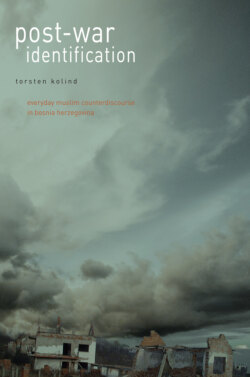Читать книгу Post-War Identification - Torsten Kolind - Страница 5
Part I
Framing the question Prologue: Chronology of the war
ОглавлениеStolac, the town of departure for this book and the site where I conducted fieldwork, is located in the south-western corner of Bosnia Herzegovina. Before the war, according to the population census from 1991, the municipality of Stolac had 18,681 inhabitants (Muslims: 43 %; Croats: 33 %; Serbs: 21 %; others: 3 %), and the town itself had 5,530 inhabitants (Muslims:62 %; Serbs: 20 %; Croats: 12 %; others:6 %). A large proportion of the Croats lived in the minor villages in Stolac municipality. When I did fieldwork among the Muslims of Stolac no census figures were available, but judging from the number of schoolchildren attending the school in Stolac, the town had a majority of Croats, the rest being Muslims. Only a few Serb families had returned. According to the daily newspaper Dnevni Avaz (8 December 2001), between 1998 and 2001 about 3,700 Muslim refugees had returned to the municipality of Stolac, and 1,700 to the town itself. Most of the Muslim returnees were confined to a few neighbourhoods in the eastern and southern part of the town, which were largely destroyed during the war.
Before the war Stolac was a beautiful and historical town, as can be seen from pre-war pictures. The town contained many buildings from the Ottoman period, including mosques, houses, housing complexes and bridges. Post World War Two architecture was finely adjusted to the cultural traditions of the town. Stolac also had a lot of light industry, with several of the factories employing between 200 and 1,000 people. In addition, there were banks, a shopping centre, a museum, a cinema, many cafés, a new hotel, a big market, a hospital and a high school. Today a large proportion of these buildings have been destroyed, the industry has fallen apart, and the Croat population runs nearly all the public institutions.
